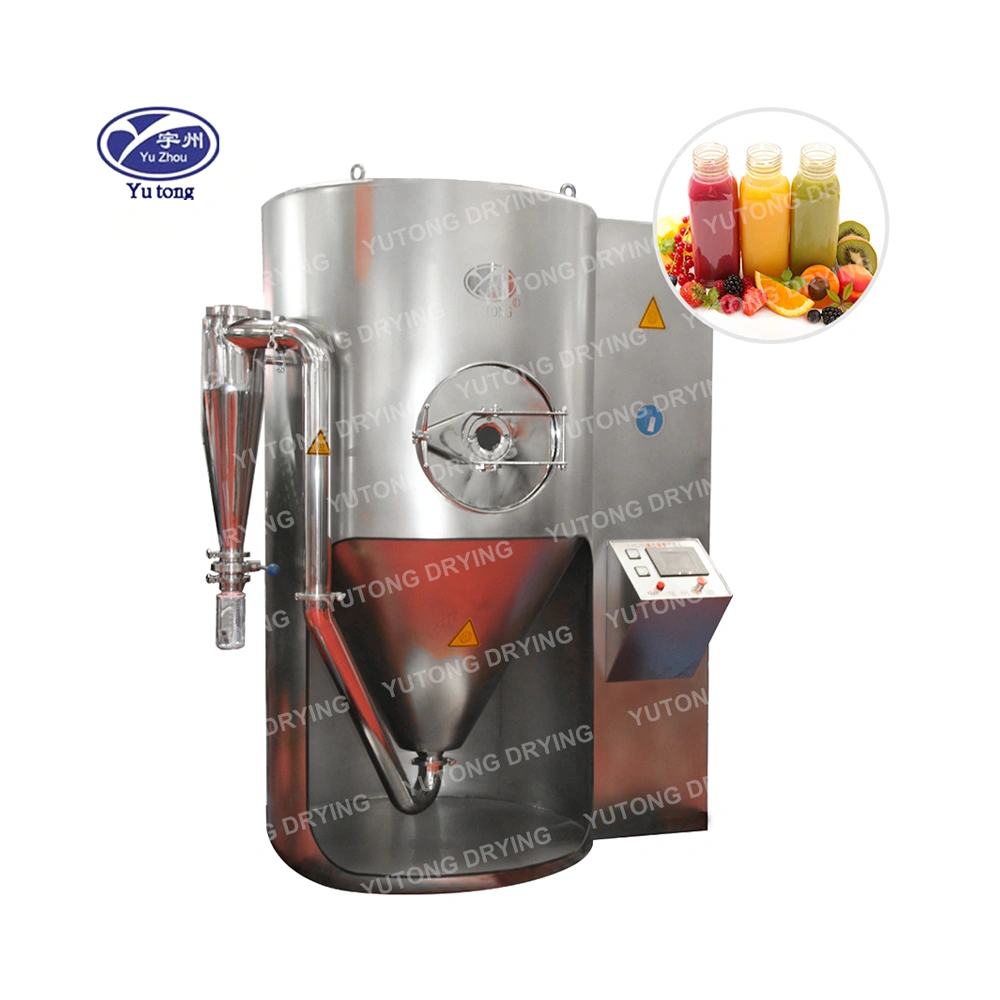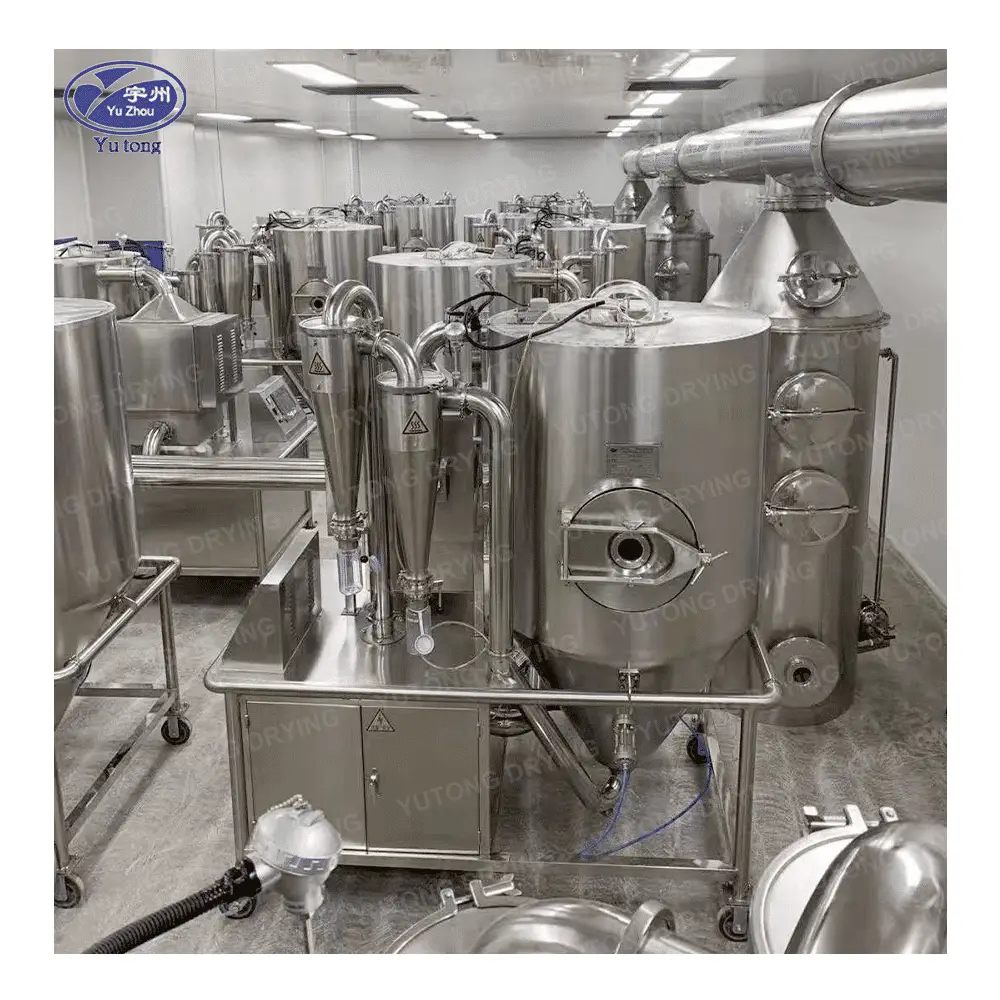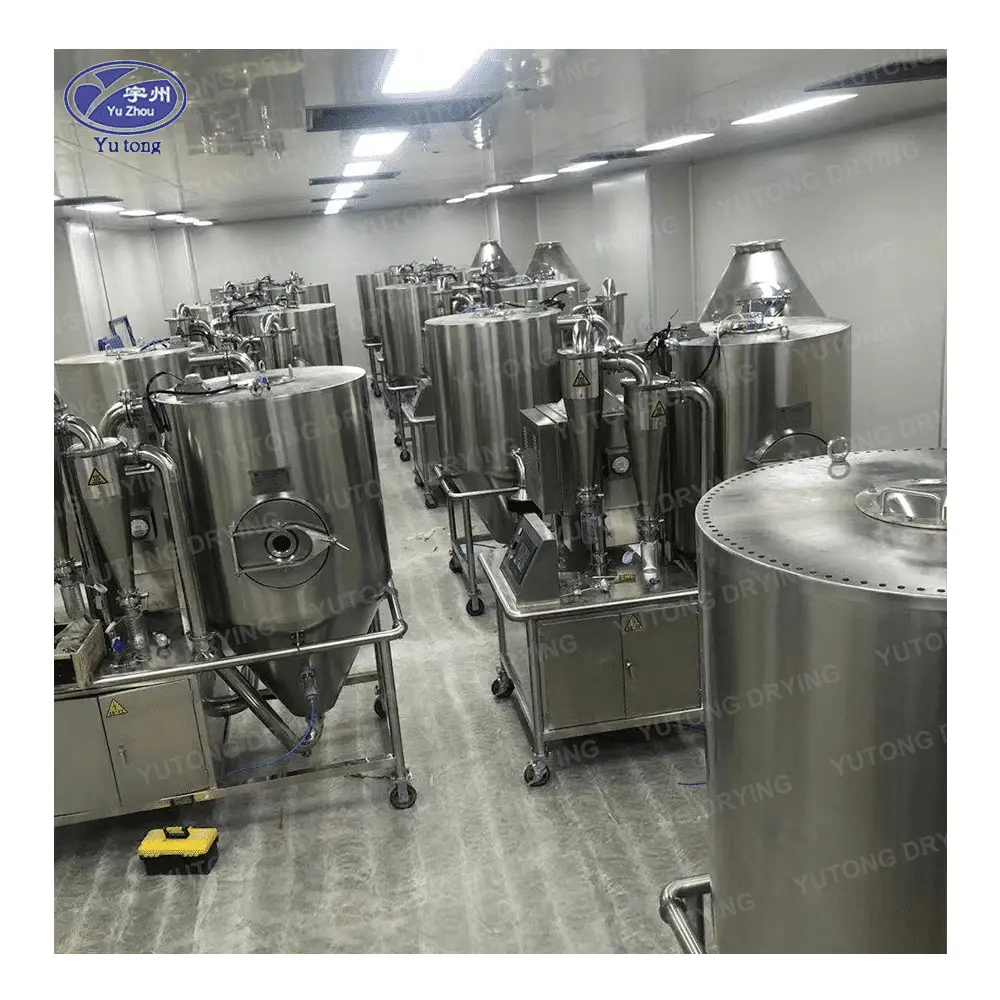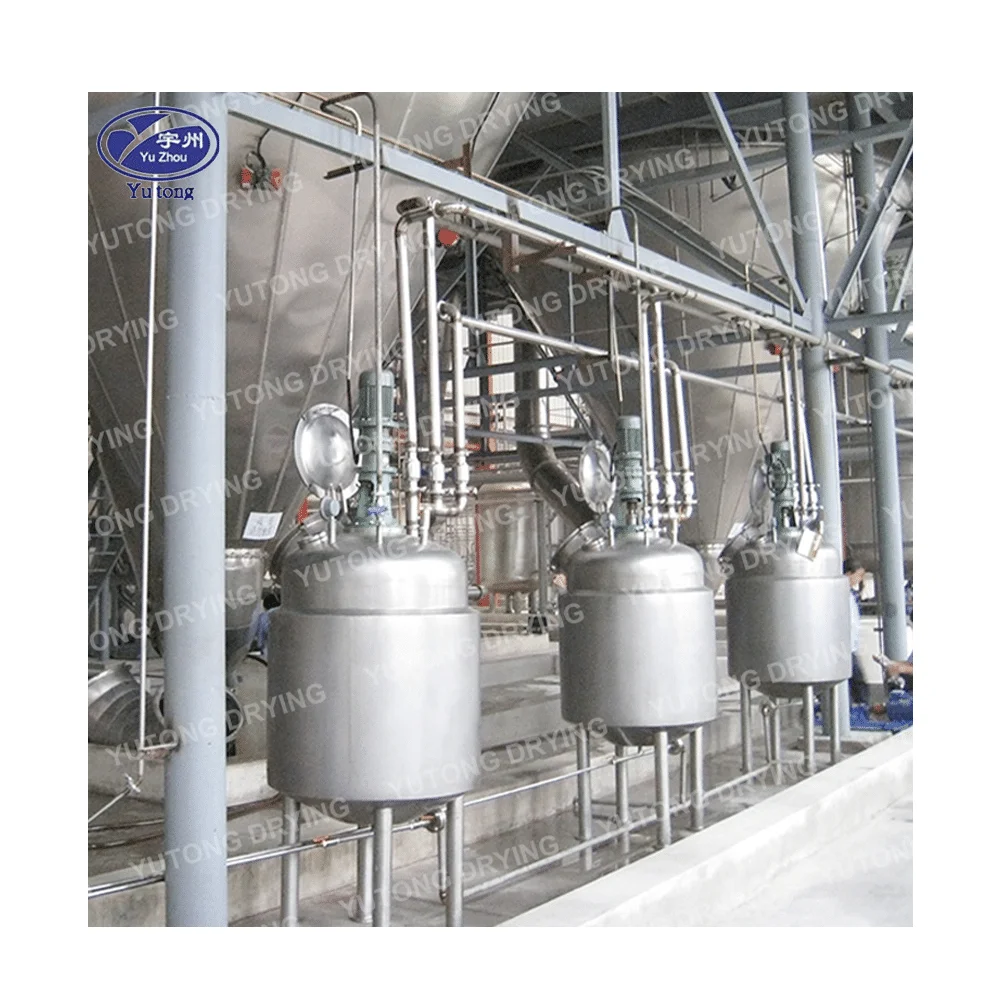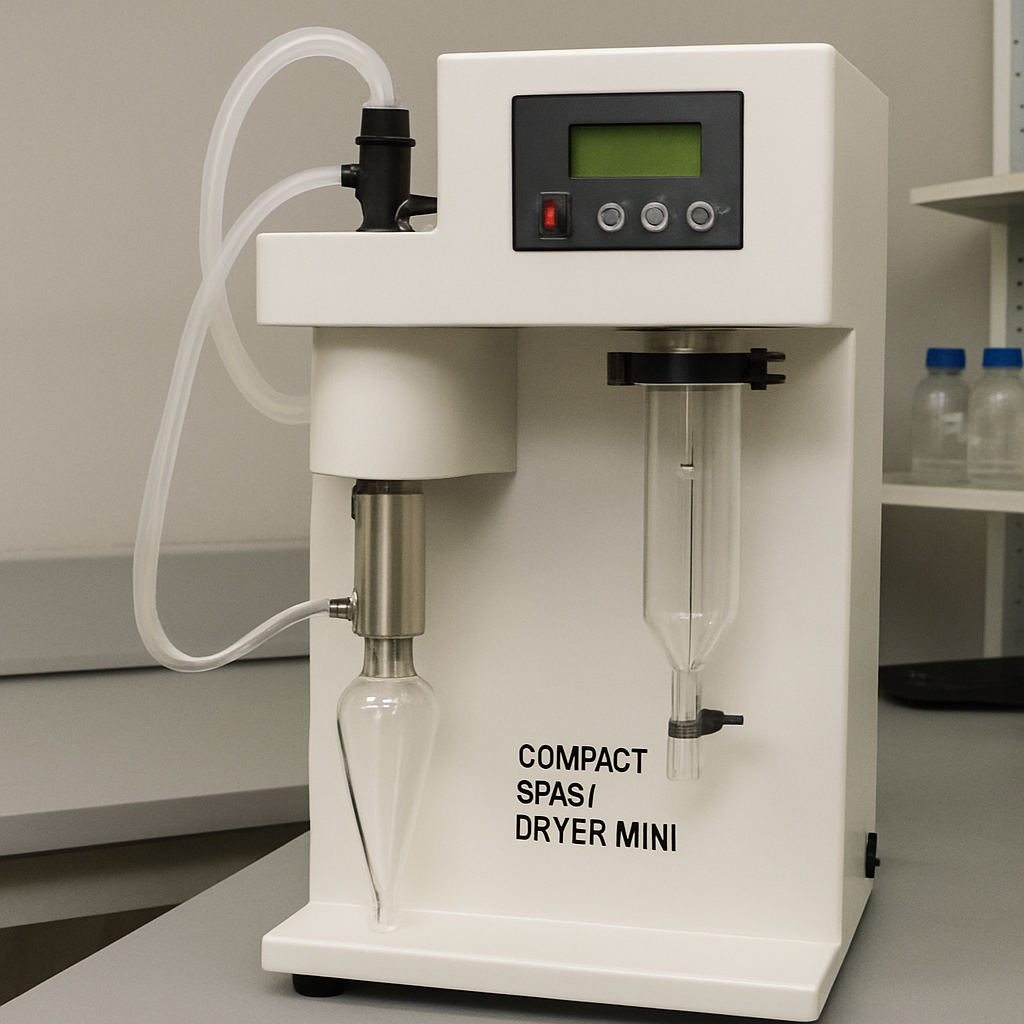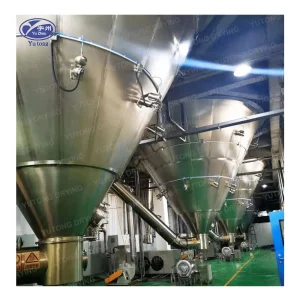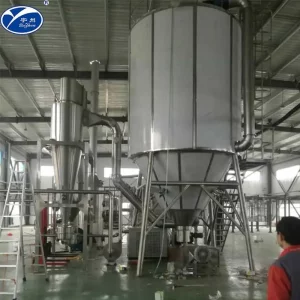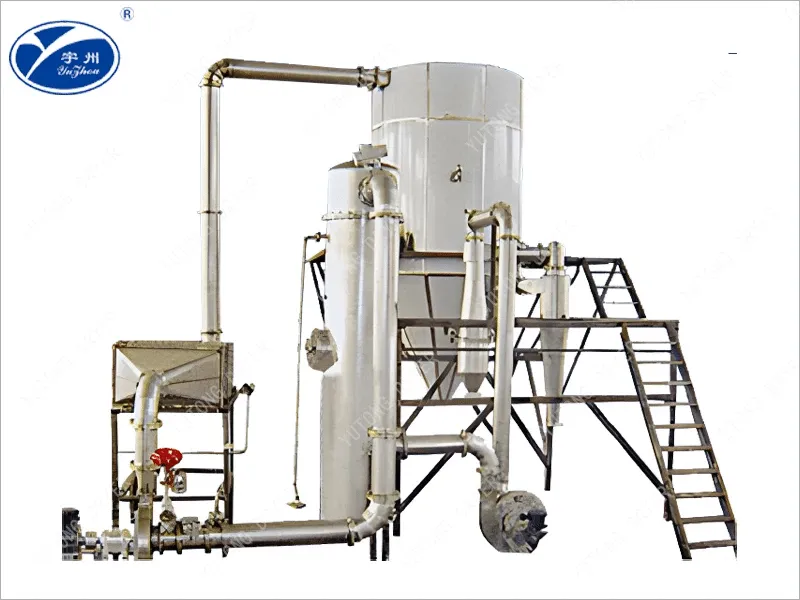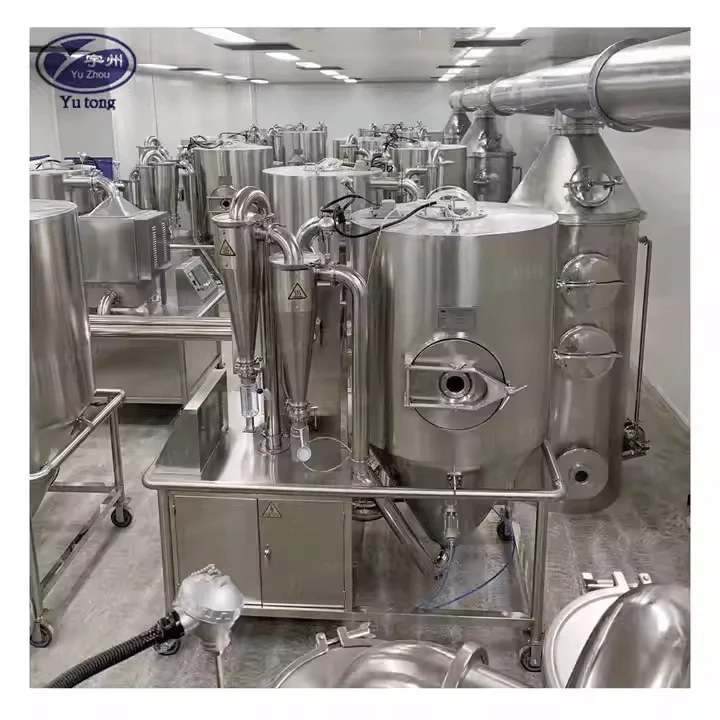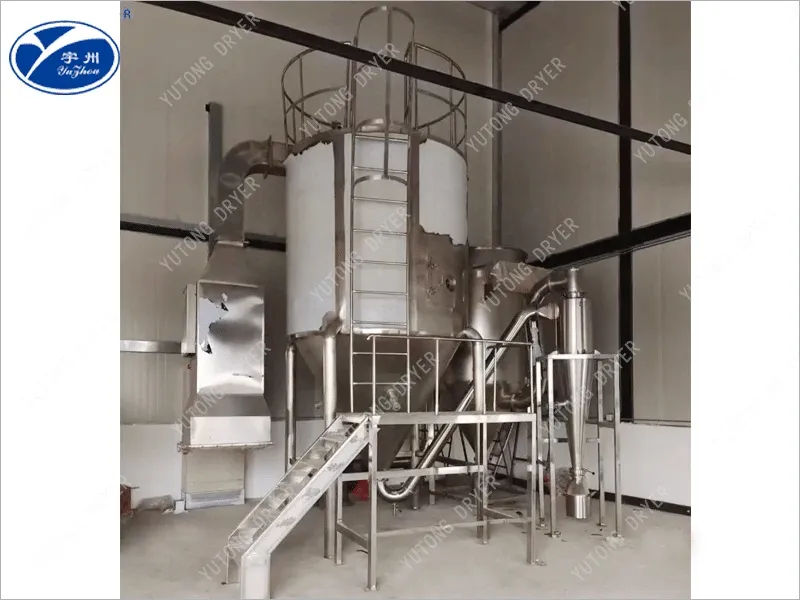
Table des matières
Détails du produit
In the realm of modern laboratory techniques, the spray dryer mini stands out as a pivotal piece of equipment. Known for its efficiency and versatility, a lab spray dryer is increasingly becoming an essential tool in various industries, including pharmaceuticals, food processing, and chemicals. This article explores the advantages of using a spray dryer mini, particularly in a laboratory setting, and why it might be the right choice for your needs.
A spray dryer mini is a compact version of the traditional spray drying equipment. It is designed to handle small quantities of material, making it ideal for laboratory research and development purposes. This small spray dryer works by transforming a liquid feed into a dry powder through rapid drying with a hot gas. The process is efficient and maintains the quality of the original material.
Key Components of a Spray Dryer Mini
A typical mini spray dryer consists of several key components:
- Feed Pump: Transfers the liquid feed into the drying chamber.
- Atomizer: Breaks the liquid feed into small droplets, increasing the surface area for drying.
- Drying Chamber: Where the actual drying takes place as hot gas is introduced.
- Cyclone Separator: Collects the dried particles from the air.
- Control Panel: Allows users to set and monitor drying parameters.
Benefits of Using a Spray Dryer Mini
Precise Control and Consistency
One of the main advantages of using a spray dryer mini is the precise control it offers over the drying process. This equipment allows you to adjust parameters such as temperature, airflow, and feed rate to achieve the desired particle size and moisture content. Consistency is crucial in research and development, and a mini spray dryer ensures that results are reproducible.
Polyvalence dans tous les secteurs d'activité
The versatility of a lab spray dryer makes it suitable for a wide range of applications. In the pharmaceutical industry, for instance, it is used to create fine powders for inhalers and other drug delivery systems. In food processing, it helps in creating powdered flavors and nutritional supplements. The chemical industry uses it to produce fine chemical powders and catalysts.
Solution rentable
Investing in a spray dryer mini is a cost-effective solution for laboratories and small-scale production facilities. Its compact size reduces the initial investment and operating costs compared to larger spray drying equipment. Furthermore, it requires less space and energy, making it an economical choice for facilities with limited resources.
Enhanced Product Stability
The spray drying process employed by a mini spray dryer enhances the stability of the final product. Rapidly removing moisture reduces the risk of microbial growth and extends the shelf life of the product. This is particularly important in industries where product quality and safety are paramount.
Ease of Operation and Maintenance
Modern mini spray dryers are designed with user-friendliness in mind. They come with intuitive control panels and automated features that simplify operation. Additionally, maintenance is straightforward, with easily accessible parts and clear instructions. This ensures minimal downtime and maximizes productivity.
Factors to Consider When Choosing a Spray Dryer Mini
Capacité et débit
When selecting a spray dryer mini, consider the capacity and throughput that your laboratory requires. Although these machines are designed for small batches, different models offer varying levels of output. Choose one that aligns with your research or production needs without compromising on efficiency.
Compatibilité des matériaux
Ensure that the mini spray dryer you choose is compatible with the materials you intend to process. Some models are designed to handle a wide range of substances, from heat-sensitive compounds to viscous liquids. Compatibility is key to achieving the best results.
Temperature and Pressure Ranges
The temperature and pressure ranges of the spray dryer are also crucial factors. Different applications may require specific drying conditions to maintain the integrity of the product. Look for a model that provides the flexibility to adjust these parameters as needed.
Budget and Cost Efficiency
While the spray dryer mini is generally more affordable than larger models, it’s important to consider your budget. Evaluate the cost against the expected benefits and choose a machine that offers the best value for money. Keep in mind that lower operating expenses and greater efficiency might justify higher upfront costs.
Conclusion
The spray dryer mini is an invaluable tool in the realm of laboratory and small-scale production settings. Its ability to deliver precise control, versatility, cost-effectiveness, and enhanced product stability makes it an attractive choice for many industries. Whether you’re in pharmaceuticals, food processing, or chemicals, a mini spray dryer can significantly enhance your research and production capabilities.
By considering factors such as capacity, material compatibility, and budget, you can select the right spray dryer mini for your needs. Investing in this equipment not only streamlines your processes but also ensures that your products meet the highest standards of quality and safety.
Embrace the advantages of a spray dryer mini and take your laboratory capabilities to the next level. With its myriad benefits and applications, it’s a decision that promises to deliver results both now and in the future.
Caractéristiques
|
spécifications
|
ZPG-25
|
ZPG-50
|
ZPG-80
|
ZPG-100
|
ZPG-150
|
ZPG-200
|
ZPG-300
|
|
|
capacité d'évaporation (kg/h)
|
25
|
50
|
80
|
100
|
150
|
200
|
300
|
|
|
quantité de liquide traitée (kg/h)
|
25-34
|
50-68
|
80-108
|
100-135
|
150-203
|
200-270
|
300-406
|
|
|
rendement du produit fini (kg/h)
|
4.8-7.2
|
9.2-14
|
14.8-22.4
|
18.4-28
|
24-42
|
36.8-56.4
|
55-85
|
|
|
teneur en solides du liquide matériel (%)
|
18-30
|
|||||||
|
teneur en humidité du produit fini (%)
|
3-5
|
|||||||
|
puissance électrique (kW)
|
63
|
132
|
153
|
204
|
246
|
330
|
||
|
source de chaleur
|
Vapeur et électricité
|
|||||||
|
Méthode de collecte du produit et son efficacité
|
Le dépoussiéreur humide à cyclone de classe un, deux ou trois étages est supérieur ou égal à 95%
|
|||||||
|
compteurs et instruments de contrôle automatique
|
indicateur de température de l'air non vicié et de l'air évacué
|
|||||||
|
température d'entrée d'air (℃)
|
160-220
|
|||||||
|
température de sortie d'air (℃)
|
80-100
|
|||||||
|
L
|
7000
|
8000
|
9800
|
11000
|
12200
|
14100
|
15000
|
|
|
dimensions hors tout (mm)
|
W
|
4000
|
5000
|
5700
|
6200
|
7000
|
7800
|
9000
|
|
H
|
6200
|
6900
|
8000
|
8900
|
10750
|
11900
|
13000
|
|
Applications
Aucun contenu correspondant à votre sélection n'a été trouvé.

